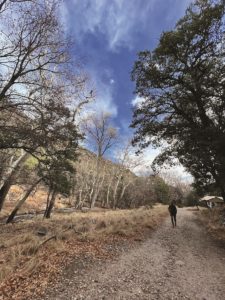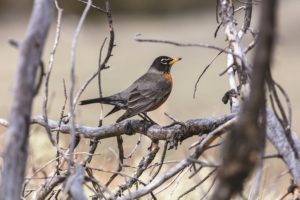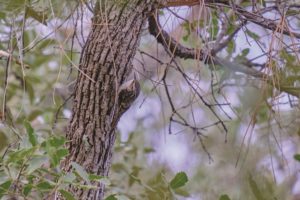I was lucky enough to be able to get away last month. My friend Bob, who lives in Tucson, always offers his warm hospitality during these cold months. But it had been nearly 10 years since I’d been to Arizona.

Arriving in the dry desert air, I had one thing on my mind: birds. So many different species live there, many of them not seen in Massachusetts. Of the 52 North American raptors, for instance, 38 live in Arizona. On my list were weird, teeny, tiny, bizarrely named birds, such as verdins, painted redstarts, and phainopeplas.
It was just after dawn when Bob and I arrived at the entry gate of the Nature Conservancy’s Ramsey Canyon Preserve outside the Coronado National Forest on the border of Mexico. The elevation is around 5,000 feet and the canyon is heavily forested with sycamore, oak, and several species of pines. A creek runs through it most of the year — an anomaly for the dry grasslands around it. The sun had yet to crest the canyon’s eastern edge. The morning was overcast and a cool 40° F as we slung our binoculars and cameras over our necks.
Backlit birds flitted about in the treetops, and I struggled to identify much at first. Then, a solitary bird rustled up the fallen leaves to a branch at eye level and I was finally able to focus on a familiar face: an American robin. Turdus migratorius is familiar to most people in the U.S. — even to those who don’t watch birds.
As I gazed at this drab adult of muddy orange and brown, I wondered: had this robin ever been to Cape Cod? Had it hatched from an egg far, far away? This canyon hosts both resident and migratory robins at this time of year.
Migration is such a curious mystery. The general notion of bird evolution in the Americas is that some 20,000 years ago, when North America was largely covered in glaciers, a tropical band around the equator acted as a point of evolution and radiation for birds.

As temperatures warmed and the glaciers receded, some brave birds began to venture to the edges of the ice fields in search of food and territory. Over thousands of years, some species stayed put, while others continued to venture seasonally to the melting edges, capitalizing on unoccupied territory to find resources.
I love to think about how this pattern has persisted through time and how birds risk so much to migrate hundreds or thousands of miles from the tropics to stake out territory, nest, and breed while dodging predators, starvation, and heavy weather.
Not to be lost in this imagery are the plants. As the glaciers receded, moraines of mixed sand, rock, and clay deposits created diverse substrates where our coniferous and deciduous forests and grasslands came to grow.
This robin clucking in the half darkness of Ramsey Canyon reminded me that there is still so much we don’t understand about the movement of birds.

I dropped the binoculars to my chest and huffed my way up the canyon trail. Birding is funny — often, the faster you move the less you see. Though at times you can sit in one place and wait for hours and see almost nothing. I tend to move until I hear some activity.
This was not the place for verdins or phainopeplas, both of which prefer open country with pockets of shrubs. These rocky pink slopes dotted with Apache pines, pinyons, and madrone trees host unique birds, though, including painted redstarts and olive warblers. And this is the only region in the U.S. to glimpse a tropical family of birds: trogons.
Hearing chip notes ahead, I scrambled up the switchback trail and waited. A brown creeper flitted up a trunk; there was a white-breasted nuthatch, then another; tiny ruby-crowned kinglets darted amidst the leathery leaves; and finally, a bridled titmouse chipped and scolded me. Mixed flocks of species are common. The thrill is in seeking out each individual and sometimes finding a rare sighting before the group passes by.

Some of these species are residents of these woods, but they do move altitudinally, so in January the birds will stay at this elevation, but as spring comes, they go higher into the hills to breed and nest.
A third type of migration can be caused by food availability. On Cape Cod we witness this occasionally, as certain species of birds we don’t see every winter, such as redpolls, evening grosbeaks, crossbills, and owls, descend in great abundance.
The sun was now flooding the forest floor, washing out colors and causing the pine sap to emit a pleasant odor. Bob and I scurried back down the creekside trail, content with the morning’s sightings.
On my mind was this: Our planet is in flux; its weather, its tides, and its inhabitants are responding accordingly. We humans have such small snapshots to witness. With all of it, as with migration, I’m not sure we can comprehend all the magic. Why SpaceX, I wonder, when there is still so much to learn about this habitable planet?
